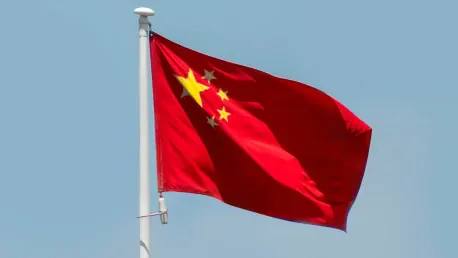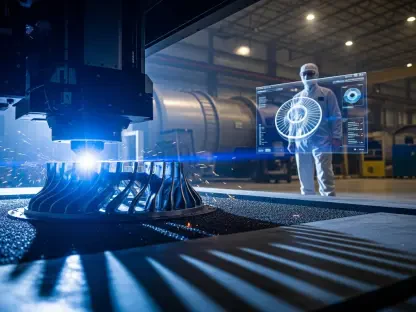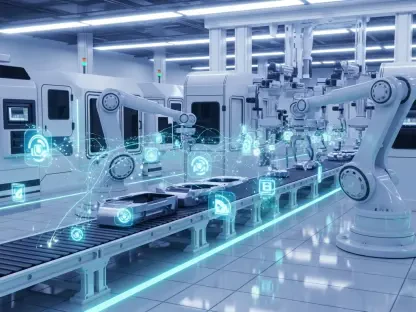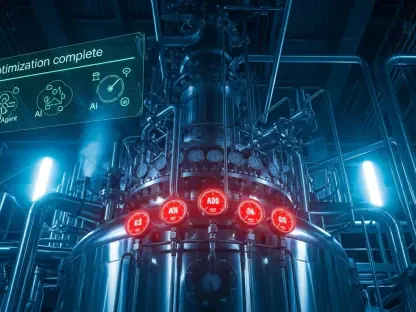China’s “Made in China 2025” initiative, launched in 2015, represents an ambitious effort to transform the country into a global leader in advanced manufacturing. This strategic plan focuses on enhancing China’s capabilities in ten critical sectors, leveraging government subsidies and non-market forces to achieve dominance. Over the past decade, China has made notable strides, but these gains have come with significant financial costs and challenges.
Achievements in Key Sectors
Dominance in Electric Vehicles and Biotechnology
China has emerged as a global leader in the electric vehicle (EV) market. With substantial investments and government support, Chinese companies have captured a significant share of the global EV market, positioning China as a major player in the industry. This leadership in the EV market not only strengthens China’s economic industrial base but also places it at the forefront of a burgeoning global industry focused on sustainability and innovation. China’s strategic support for EVs ranges from financial backing for domestic manufacturers to infrastructure development for charging stations, propelling significant growth and market penetration.
In the biotechnology sector, China has made significant progress, particularly in areas with potential military applications. This rapid advancement in biotech has positioned China as a formidable force in developing cutting-edge biological research and technology. The country’s emphasis on biotechnology through state funding and incentives has led to substantial developments in areas such as gene editing, pharmaceuticals, and biotechnology research capabilities. These advancements raise concerns globally regarding their implications for security and power dynamics, as biotechnological capabilities may have both civilian and military applications, potentially shifting the balance of power in critical technology sectors.
Superior Shipping Capacity and Rail Infrastructure
China’s shipbuilding capacity now far exceeds that of the United States, showcasing the country’s prowess in maritime equipment. This dominance in shipping not only strengthens China’s economic position but also enhances its strategic capabilities on the global stage. Chinese shipbuilders, supported by governmental policies and subsidies, have significantly increased their production capacity and technological sophistication, capturing a larger share of the global market for commercial and military vessels. This surge in shipbuilding capacity also underscores China’s ambition to control essential maritime trade routes, thus gaining critical leverage in global trade networks and naval power.
Furthermore, China has successfully integrated itself into various U.S. rail infrastructure projects funded by American taxpayers. This involvement highlights China’s growing influence and the strategic implications for the United States. Chinese companies have become key players in supplying rail cars and technology for large-scale infrastructure projects across the U.S., effectively embedding their technology and systems within American transportation networks. This integration not only underscores the rising technical competence of Chinese manufacturers but also raises strategic concerns about dependency and security vulnerabilities within U.S. critical infrastructure. As China continues to expand its reach into global infrastructure projects, its influence over essential sectors like transportation grows, prompting reassessments of security and dependence.
Financial Costs and Challenges
High Financial Expenditures
The aggressive push for self-sufficiency and dominance in advanced manufacturing has come at a staggering financial cost for China. Estimates suggest that China’s annual industrial policy spending reached around $250 billion as of 2019. These massive expenditures underscore the extensive use of state resources to achieve the goals of the “Made in China 2025” initiative. The heavy reliance on government subsidies and financial incentives illustrates a deliberate strategy to outpace global competitors by sheer scale of investment, even if it means bearing high financial burdens. While such spending has fueled rapid advancements and growth in targeted sectors, it also introduces significant fiscal pressure on the state, raising concerns about the long-term sustainability of such an extensive industrial policy.
Mixed Success and Internal Strains
While China has achieved self-sufficiency in numerous sectors, some ventures have been less successful. The high financial costs and mixed results highlight the inherent challenges and vulnerabilities in China’s strategy. For instance, certain advanced technology industries have not met the ambitious targets set out by the state, facing issues such as technological bottlenecks, market saturation, and inefficient resource allocation. Moreover, the presence of a state-driven approach often clashes with market dynamics, resulting in inefficiencies and misalignments with global industry standards. These internal strains suggest potential weaknesses within China’s industrial policy framework, raising questions about its ability to maintain momentum and sustainable growth.
Strategic Implications for the United States
Expert Testimonies and Policy Recommendations
Experts testifying before the U.S.-China Economic and Security Review Commission emphasize the dual nature of the challenge facing the United States. The U.S. needs to adopt both offensive and defensive strategies to address China’s industrial plans. Testimonies highlight that China’s practices are unlikely to change, and the Chinese Communist Party aims for global dominance and dependency on its manufacturing and technological innovations. This scenario calls for the U.S. to reassess its industrial policies and safeguard measures to protect critical technological and manufacturing sectors from the strategic influence exerted by China’s aggressive policies. Analysts suggest that proactive engagement and strategic investment in cutting-edge research, infrastructure modernization, and domestic manufacturing competitiveness are crucial to counterbalancing China’s advancement.
Proposed U.S. Policy Measures
In response to China’s aggressive industrial policies, experts recommend significant policy shifts. One critical measure proposed is the revocation of China’s Permanent Normal Trade Relations status. This step, supported by the Alliance for American Manufacturing and other key stakeholders, aims to mitigate the adverse effects of China’s practices and protect U.S. interests. Alongside trade policy adjustments, there are calls for expanding strategic alliances with global partners, investing in advanced manufacturing capabilities domestically, and prioritizing innovation-driven economies to uphold competitive advantages. By realigning its industrial and trade strategies, the U.S. can create a robust framework to navigate the complexities of global industrial competition and maintain its technological leadership.
Future Outlook and Roadmap
Long-Term Strategy and Global Impact
The “Made in China 2025” plan is just the beginning of China’s broader strategy, with additional ten-year plans aimed at strengthening its global industrial power. If successful, these efforts could render the U.S. industrial and defense bases reliant on China, granting Beijing significant leverage over the U.S. economy, political landscape, and societal frameworks. The ongoing endeavors to enhance manufacturing sectors, develop new technologies, and embed Chinese firms in global markets signify a long-term vision for reshaping global industrial landscapes. China’s approach requires continuous evaluation of its strategies, addressing both the successes and the shortcomings to align future industrial projects with evolving global standards and technologies.
Comprehensive Policy Roadmap for the U.S.
Launched in 2015, China’s “Made in China 2025” initiative is a bold plan to transform the country into a global powerhouse in advanced manufacturing. This strategic framework aims to significantly boost China’s competitive edge in ten crucial sectors, including robotics, aerospace, and biopharmaceuticals. The government has been leveraging substantial subsidies and non-market mechanisms to drive this initiative forward. Over the past decade, China has made impressive headway, showing considerable improvement in numerous areas. However, this progress has not come without a price. The financial burden associated with these advancements has been substantial, and the country faces a slew of challenges. These difficulties include intense international scrutiny and the necessity to innovate rapidly to stay ahead of global competitors. As China continues to push forward with “Made in China 2025,” the balance between achieving technological dominance and managing economic and political hurdles remains a critical issue.









